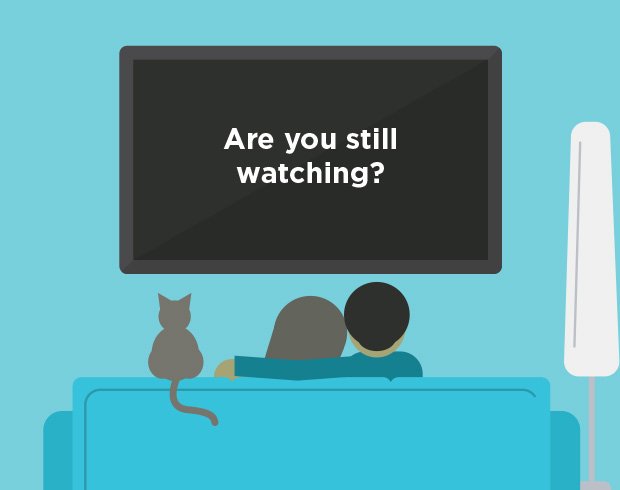The Age of Streaming
Netflix, Spotify, YouTube, HBO…these are just a few of the internet based on demand entertainment sites and apps – or better known as “streaming services.” We’ve all heard of and are likely subscribed to plenty of them.
One of the biggest media changes of the last decade has been the rise of these services. Gone are the days when you had to buy the DVD to watch your favorite episode of Law & Order, hope that the radio plays your favorite song, or wait for MTV to play the new popular music video. Today you can find almost any movie, show, or song and consume it instantly on one of these services.
We can only imagine that our LMO team is playing a role in this growth, as the overwhelming majority of our employees have one or more streaming services available to them: 82% of LMO employees have Netflix, 65% have Amazon Prime Video, 65% have Disney+, 65% have Spotify Premium, 41% have Hulu, and 35% have HBO Go or HBO Now. On top of that, 53% do not even have traditional cable
But what is the explanation for the success of streaming services? Glad you asked! When we asked LMOers to rank why they have streaming services from most important to least important, 50% of LMOers said that the content these streaming services provide was the number one reason they subscribe to that service. Interestingly enough, “fewer ads” received the fewest number of votes. So how does this affect advertising?
“Streaming services have added another layer of complexity to the constantly changing media landscape,” according to Chris Laughlin, the CEO of LMO: “Although some of the marketing mix has changed due to streaming, the reality is Marketing has constantly adapted to the way consumers view content.”
While traditional TV still thrives on advertising – the price tag for a 30-second TV commercial during Super Bowl LIV was $5.6 million – the rise of streaming services has presented a unique challenge and opportunity for advertisers. Although Netflix, Disney+ and others offer their service ad-free; the majority of streaming services are actually ad-supported. However, many of these ad-supported platforms offer consumers a choice between an ad-supported service at a cheaper rate (sometimes it’s even free) and a “premium” subscription option that is ad-free.
This change to advertising opportunities brings up questions of how the industry will adapt. Will we see even more product placement in TV shows and movies? Will we see partnerships between streaming services and brands?
Many of the target audiences that LMO works with are part of the younger demographics; age 18-29. Unsurprisingly, over 60% use a streaming service to watch TV programs. Since traditional TV doesn’t reach them in a meaningful way, we’ve found that using CTV is a great, cost-efficient way for us to target specific demos and locations. We’ve also found that viewers are more engaged when consuming TV through streaming services because they are choosing to watch something (as opposed to traditional cable channel flipping).
“As buyers, we can choose to go directly to the source (i.e. buying inventory directly from Hulu to run on their ad-supported platform) or we can buy cross-platform through DSPs that offer OTT inventory,” Sarah, LMO Media Director says. “There are benefits and challenges to both strategies. If I’m buying directly from Hulu, for example, I know my client’s ads are being served in a premium environment and are 100% non-skippable, however the cost will be much higher. Running through a DSP offers cost efficiencies and more granular targeting capabilities, however there is less control over where your inventory is running. Choosing the right mix between platform-direct and OTT will be dependent on our client’s goals.”
Luckily for fans of all things streaming and marketers alike, three more major video streaming options are launching in 2020…
- Quibi, whose name itself comes from the catchphrase “quick bites” because all episodes are 10 minutes or less, has just entered the streaming fray earlier this year. The new service launched on April 6 with over 50 shows from Hollywood heavy weights like: Steven Spielberg, Jennifer Lopez, and Chance the Rapper. An ad supported and an ad free tier will be available
- Warner Bros/Time Warner is using the HBO brand name to launch HBO Max; where it will house all HBO content like The Wire, Sopranos, and Game of Thrones, as well as original programs and even classic shows like Friends. HBO Max is completely ad free at launch.
- Finally, NBCUniversal will launch Peacock, which will have NBC’s crown jewel, The Office, and a lot more content from the NBC archives. Peacock will also have an ad supported and ad free tier. A pilot program for Xfinity customers is available now, with a wide launched scheduled for July 15.
As the streaming service industry continues to grow in both popularity and competition, marketers and advertisers will be presented with levels of exposure never seen before. While the Super Bowl may be the most watched sporting event, the number of people who subscribe to and watch movies and shows, or listen to music, on streaming services over the course of a year far exceeds anything traditional cable can offer. Being adaptable, flexible and innovative are crucial qualities for any marketer or advertiser to have during this period of unprecedented internet growth. As President John F. Kennedy once said, “Change is the law of life. And those who look only to the past or present are certain to miss the future.”




